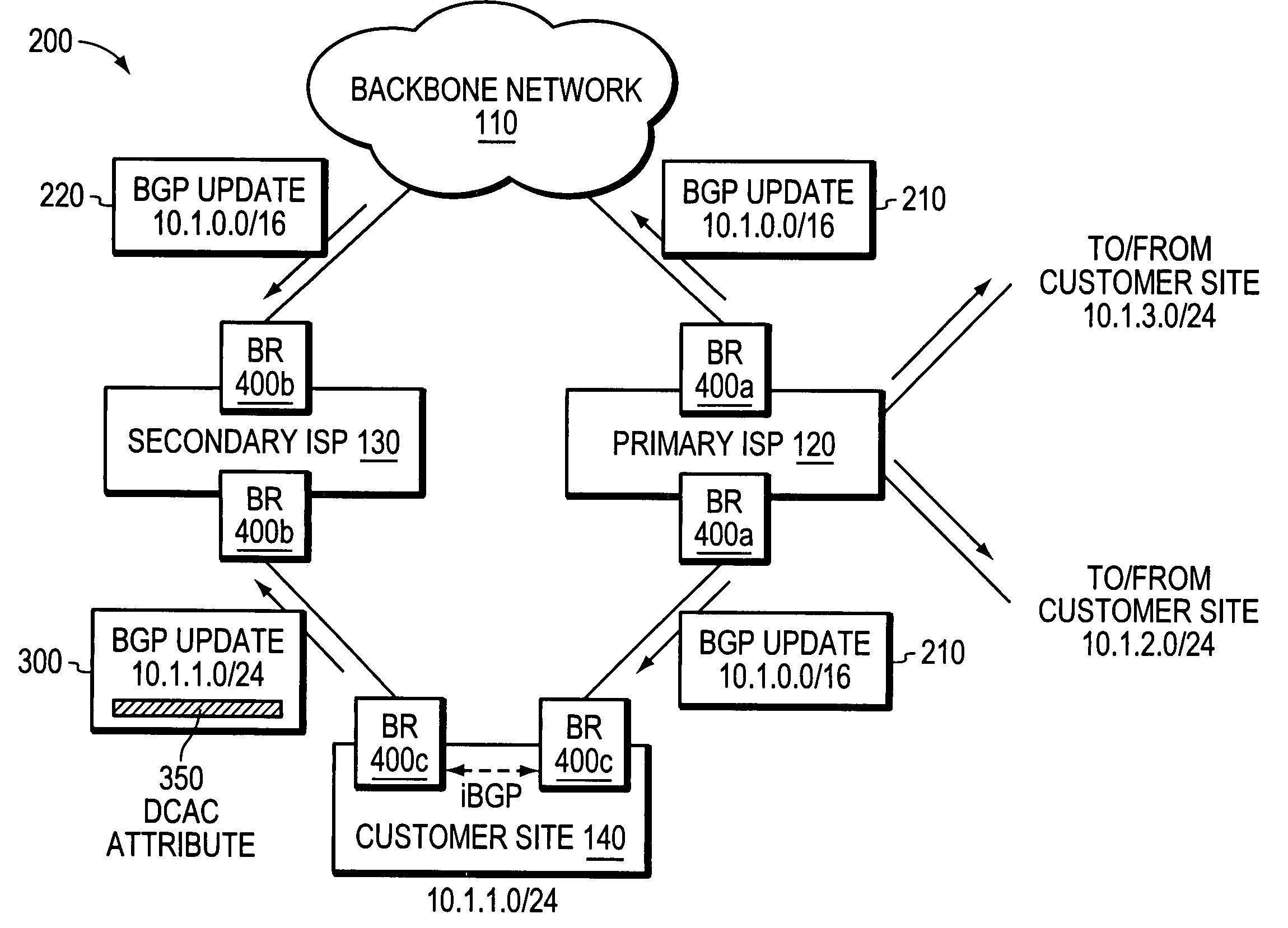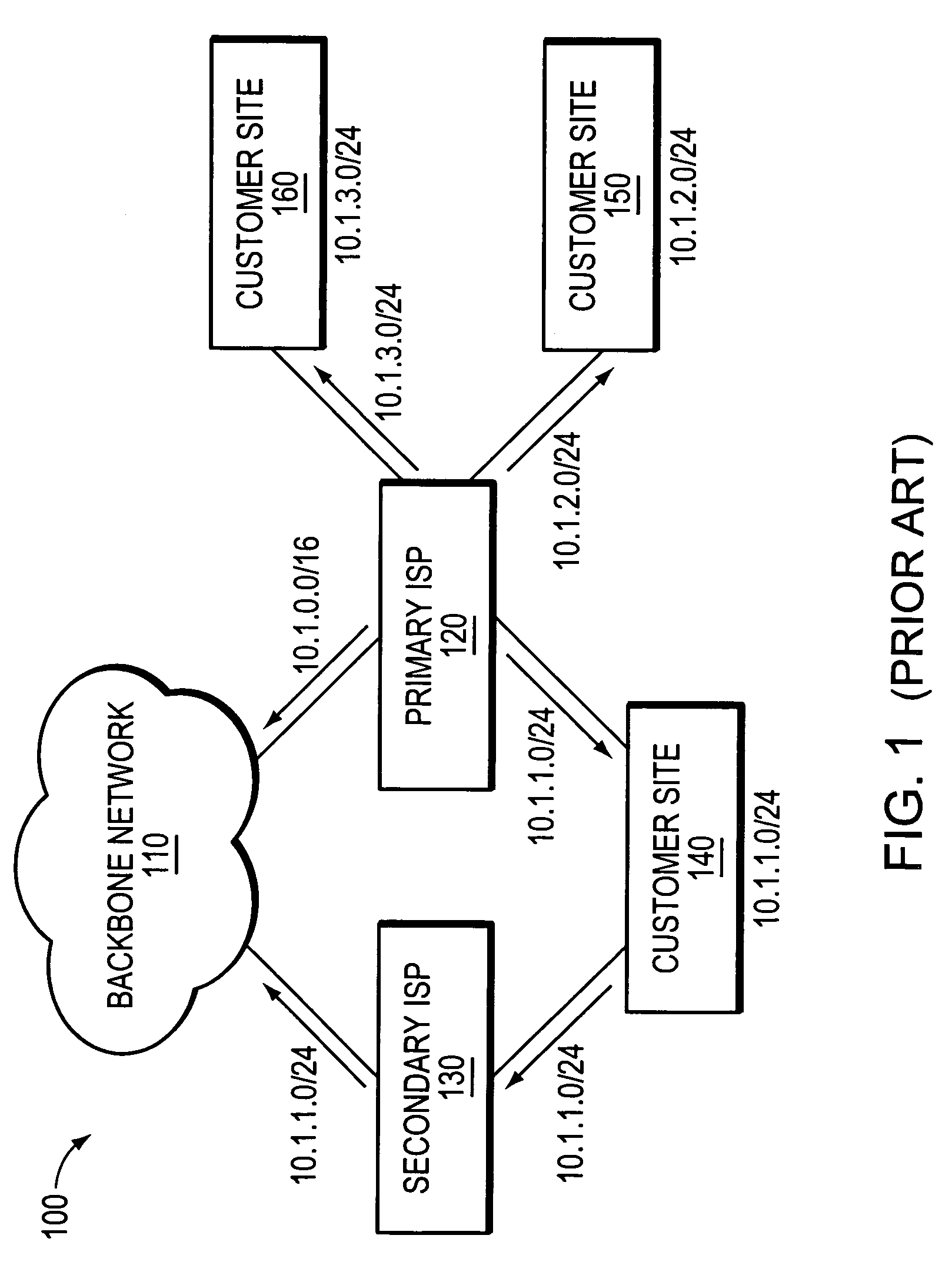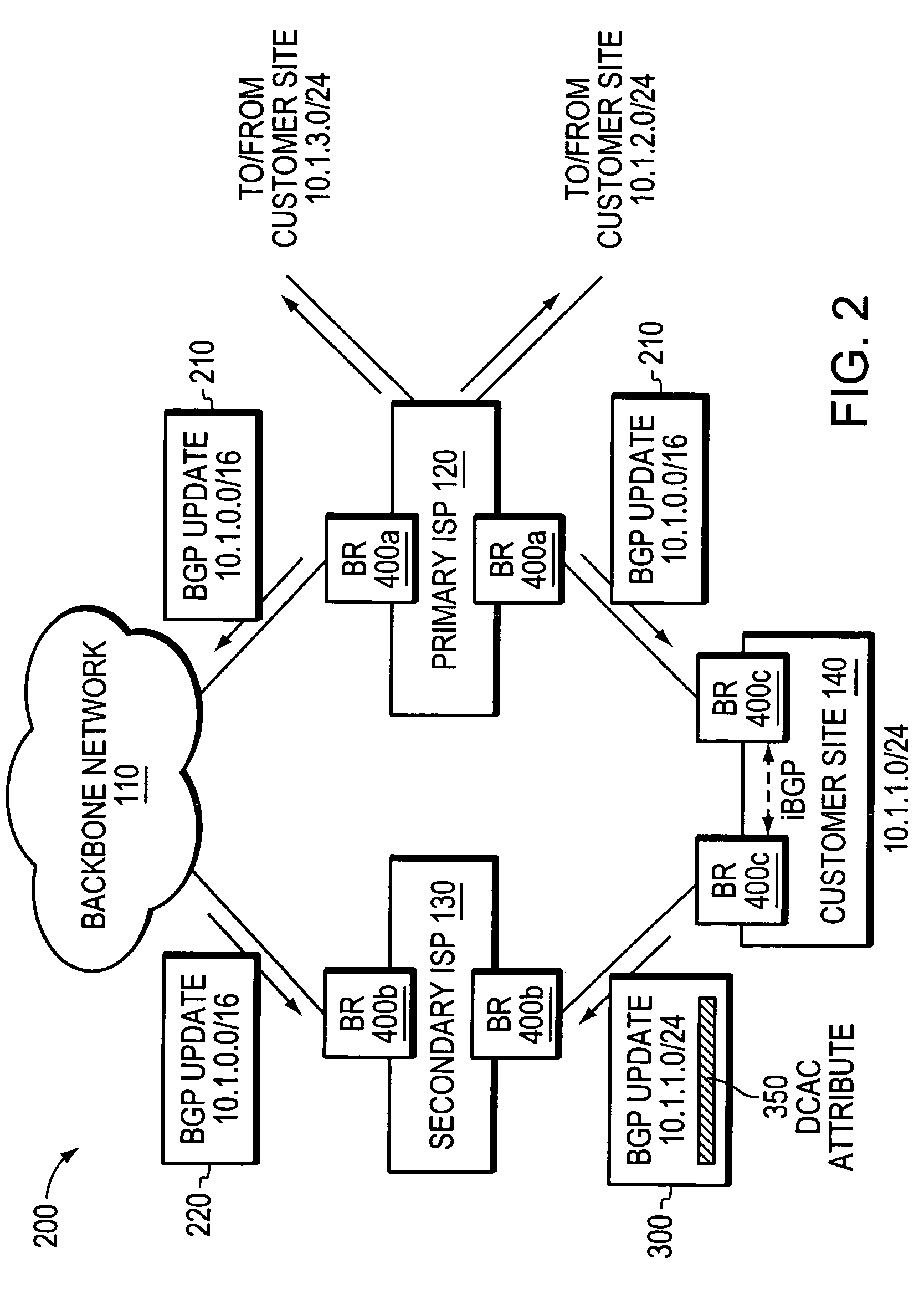Multi-homing using controlled route leakage at a backup service provider
a backup service provider and multi-homing technology, applied in the field of computer networks, can solve the problems of unfavorable large-scale configuration over the internet, undesired asymmetric network traffic pattern, and often arise in the conventional multi-homed topology, and achieve the effect of improving bandwidth utilization and fast network convergen
- Summary
- Abstract
- Description
- Claims
- Application Information
AI Technical Summary
Benefits of technology
Problems solved by technology
Method used
Image
Examples
Embodiment Construction
[0039]FIG. 2 illustrates an exemplary multi-homed computer network 200 in which route aggregation may be employed in accordance with the illustrative embodiments of the invention. For ease of illustration and description, it is assumed that FIG. 2 illustrates the network after the primary ISP 120 has allocated blocks of IP addresses to its neighboring customer sites. For example, as shown, the primary ISP allocated the block of IP addresses 10.1.1.0 / 24 to the multi-homed customer site 140, and allocated the blocks of IP addresses corresponding to 10.1.2.0 / 24 and 10.1.3.0 / 24 to its other neighboring customer sites (not shown). Although this illustrative embodiment assumes that each customer site has been allocated a single range of IP addresses (i.e., a single address prefix), those skilled in the art will appreciate that each customer site may be allocated one or more different blocks of IP addresses (i.e., one or more address prefixes).
[0040]The primary ISP 120 may aggregate at ...
PUM
 Login to View More
Login to View More Abstract
Description
Claims
Application Information
 Login to View More
Login to View More - R&D
- Intellectual Property
- Life Sciences
- Materials
- Tech Scout
- Unparalleled Data Quality
- Higher Quality Content
- 60% Fewer Hallucinations
Browse by: Latest US Patents, China's latest patents, Technical Efficacy Thesaurus, Application Domain, Technology Topic, Popular Technical Reports.
© 2025 PatSnap. All rights reserved.Legal|Privacy policy|Modern Slavery Act Transparency Statement|Sitemap|About US| Contact US: help@patsnap.com



